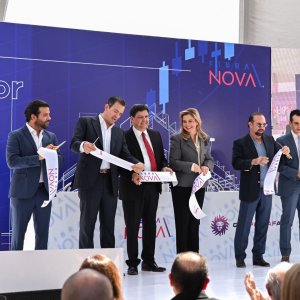United and Stronger Aeroclusters in the Face of Adversity

STORY INLINE POST
Q: How is the cluster working to deal with the impact from pandemic?
A: The data, as everyone knows by now, suggests the aerospace industry will not emerge from the pandemic’s impact until 2024, or perhaps early 2025. The cluster alone is not going to change that fact, so we need to face it in another way. What we can change is how we approach the fallout from this crisis, first and foremost through diversification. Companies are diversifying and looking at business opportunities in other industries, such as automotive or even the medical sector, and many are succeeding. That is the first strategy that I see for our members. We are helping to create this new business ecosystem and enabling our partners that are looking for an opportunity to use their installed capacity. At the same time, we are in contact with other clusters in Mexico and FEMIA —. We are all working to uncover other business opportunities within the country. The most important factor, however, is diversification and helping our members promote their companies, not only within our country but also abroad.
Q: How have the cluster's strategies evolved to attract foreign direct investment and companies to the region?
A: We work under the triple-helix concept, so the cluster includes not only the industry but also the government and academic institutions. Together, we have a comprehensive strategy to promote and strengthen the industry within the city, while demonstrating the advantages of investing in a city like Chihuahua. As a team, we receive investors and highlight all the advantages that they would receive from setting up their plant or operations or investing in the country and in the region.
Q: What challenges are local aerospace companies facing and how is the cluster supporting them?
A: Many problems go beyond the aerospace crisis. In particular, some companies are dedicated to providing parts for the Boeing 737 Max, which has not been relaunched. Those companies are taking a heavy hit. Our support includes promoting their capabilities and create a networking environment between our partners and outside. But the most important element is promotion so that these companies have the opportunity to work with large suppliers and use their installed capacity. FAMEX is a key opportunity and we are doing everything possible to enable the participation of these companies at the next event.
Q: As the aerocluster’s new president, what are your initiatives within the cluster?
A: I would like to see a more concrete structure, similar to other organizations. Apart from that, we are strengthening the four working committees of the cluster with a team of specialized people per committee. The first is focused on courses and certifications; we want to increase our catalog of courses that add value to our associates. The second is the supply chain committee, whose objective is to identify business opportunities based on the needs and strengths of our cluster. Third is our talent development committee, which is our link to academic institutions so that together we work to develop the talent of the present and future that our industry needs. Finally, we have our promotion committee in charge of promoting our cluster inside and outside the country in the different aerospace events. There is a whole team of experts working for the industry.
Q: What technological tools or other projects is the cluster developing?
A: Together with the economic development, FEMIA and other organizations, we are developing a digital platform to map the industry's competencies of the aerospace sector in Chihuahua. This is important since it will allow us to have a clear understanding of what our capacities are and create strengthening strategies in our industry. Another important project that we are implementing in the cluster is the survey of human resources in conjunction with Catch Consulting, this survey is regionalized to the aerospace industry and several States of the country participate. These results allow our associates to make better decisions for the retention of their talent.
Q: What is the potential of nearshoring for the aerospace industry in Mexico?
A: There is a great deal of optimism because large companies are looking to relocate their supplier base in Mexico. We have not seen a lack of interest in moving operations to Chihuahua, and in general, there are many opportunities within Mexico. I would say that it is already starting to improve.
Only about 3 percent of the content of an aircraft is made in Mexico. That is very low, so we see this as a very positive opportunity.
Q: What are the next steps for the Chihuahua cluster?
A: First of all, when you are in a crisis, you also need to focus on the short term, so we want FAMEX to be successful, we want to support it and we want our associates in the city to attend and be part of that business ecosystem. We want them to have the opportunity to be there and offer their products and services. A good deal of business is done at these fairs. The connection between companies during these events is remarkable, so we want to focus on making it a success. It will be an opportunity to hear new strategies, achieve sales and participate in networking activities.








 By Sofía Hanna | Journalist and Industry Analyst -
Wed, 05/05/2021 - 13:36
By Sofía Hanna | Journalist and Industry Analyst -
Wed, 05/05/2021 - 13:36
















